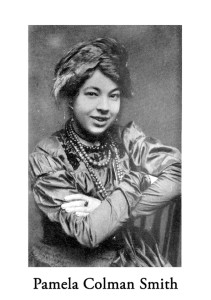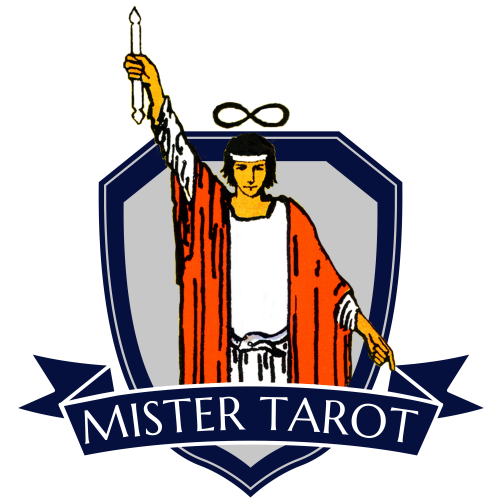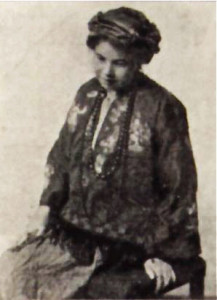Outside of the Tarot community, no-one knows her name…but to those with a leaning to Tarot, we are indebted to the visual interpretations of Pamela Colman Smith: the artist of the Rider-Waite-Smith deck.
Pamela Colman Smith (known to her friends as ‘Pixie’) was born in England, but her father had business ties with Jamaica, and the family moved there when she was 10 years old. They lived in Jamaica for several years. Her Jamaican nurse told her the stories of the land and people, and this folklore became an important part of her life.
When she was 15 she moved back to Brooklyn and during her schooling she was encouraged to study art. By the time she was 19 she had a feature exhibition which was reviewed in the New York Times. By the age of 21 she had gone back to London to become a writer and illustrator and she managed to publish four books, three of which were hers entirely—two included hand-coloured prints and one of the books was a series of Jamaican folk tales with line drawings. In that year she also toured with a theatre company.
Pixie spent several years working with the theatre company where she helped with costume design and stage design. One of the members of this theatre group was its business manager, Bram Stoker, the author of ‘Dracula’. Pixie illustrated his last novel, ‘Lair of the White Worm’. Pixie also did illustrations for the poet William Butler Yeats.
It was Yeats who introduced Pixie to the occult society The Hermetic Order of the Golden Dawn. Arthur Edward Waite (the designer of the modern Tarot) and Aleister Crowley were members at the time.
Soon after her initiation into the Golden Dawn, the Order broke up into two groups. Many of the Golden Dawn members, including Pixie stayed with Waite’s side of the group. At this time Waite was designing a new Tarot deck which he asked Pixie to illustrate.
Pixie worked on this set of Tarot drawings in a small studio in London’s Chelsea district. She was 31 years old at the time and had become a small, slightly plump woman with an exotic appearance. She worked on the Tarot card project for about seven months. A full coloured set of 80 cards had to be ready for publishing in December 1909 — 78 Tarot cards plus the designs for the back of the card and the nameplate.
Not one of the 80 original drawings for the cards has been found. This is probably because the Rider & Sons Publishing archives were destroyed during World War II bombing raids.
 When the cards were published, they had minimal marketing and only a few occultists took notice—and most of them were stuck in long-running feuds. The general public did not know what to do with these ‘novelty’ cards. Tarot was considered to be a French custom, not English. It was only when the ‘New Age’ movement ‘discovered’ Tarot in the late 1960s and 1970s that they became popular.
When the cards were published, they had minimal marketing and only a few occultists took notice—and most of them were stuck in long-running feuds. The general public did not know what to do with these ‘novelty’ cards. Tarot was considered to be a French custom, not English. It was only when the ‘New Age’ movement ‘discovered’ Tarot in the late 1960s and 1970s that they became popular.
There is little known about the last 35 years of Pixie’s life. We know that she died in 1951 in Cornwall, but the location of her grave is unknown. She was in debt and all of her possessions were auctioned off.
Except for a few art exhibitions during her early career, which had a small amount of success, most of her artwork has disappeared. Pixie would probably have been forgotten except for the Rider-Waite-Smith Tarot Deck.
It is thanks to Pixie’s visionary genius (and Waite’s direction) that we are blessed with these magnificent Tarot cards that have continued to grow in popularity.And through her marvellous artwork she will never be forgotten.

